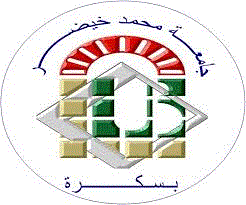|
Résumé :
|
This research paper investigates one of the most controversial and problematic subjects in the domain of English language teaching. It originally deals with the teaching of aural-oral skills using laboratory material to second year students at the University of Biskra. The primary aim is to probe the effectiveness of language laboratory as a teaching aid in developing and improving students' listening and speaking abilities. The present paper consists of two main parts and each part includes three chapters. The first part covers the theoretical aspect of the study. It generally presents a research on the nature of language skills and teaching aids, and more accurately it puts the aural-oral skills and language laboratory in focus. This theoretical foundation actually represents the review of related literature. The first chapter is a sort of introductory work. It summarizes the viewpoints of language researchers concerning the nature of the receptive and productive skills (listening and reading, speaking and writing). It also looks at the different teaching aids (audio, visual, and audio-visual) and their placement in the context of foreign language teaching. The second chapter introduces one of the most used teaching aid in TEFL; language laboratory. It establishes a historical overview of language laboratory and how it develops through time. The primary focus of this chapter is to describe almost all what is associated with this educational technology; its functions, procedures, types of installation, the teaching techniques and instructional material. The third chapter examines the nature of the two skills under investigation; listening and speaking. It also introduces the most common activities used to teach the two skills in classroom and particularly in the language laboratory. Students' difficulties in learning these skills are also given specific attention. The second part is devoted to the practical aspect of the study. It represents an actual application of what has been discussed earlier in the first part concerning the teaching of listening and speaking in the language laboratory. In this part we put the theory into practice in a form of fieldwork. The fourth chapter paves the path for the experimental study. It represents a description, analysis and interpretation of the questionnaires' responses given by students and teachers. This in turn (questionnaires' responses) help us to design the experimental program and material aiming at improving students' aural-oral skills. The fifth chapter is devoted to the experimental study. It includes the experimental instructional program, the scores obtained in the tests and the statistical analysis and interpretation of the results. The sixth chapter introduces some teaching recommendation about the effectiveness of the language laboratory in improving students' listening and speaking skills. Of course, the suggested pedagogical implications based on what we think can be helpful for the oral expression teacher.In fact, the study represents the personal perception and perspective of the researcher concerning the subject under investigation.
|



